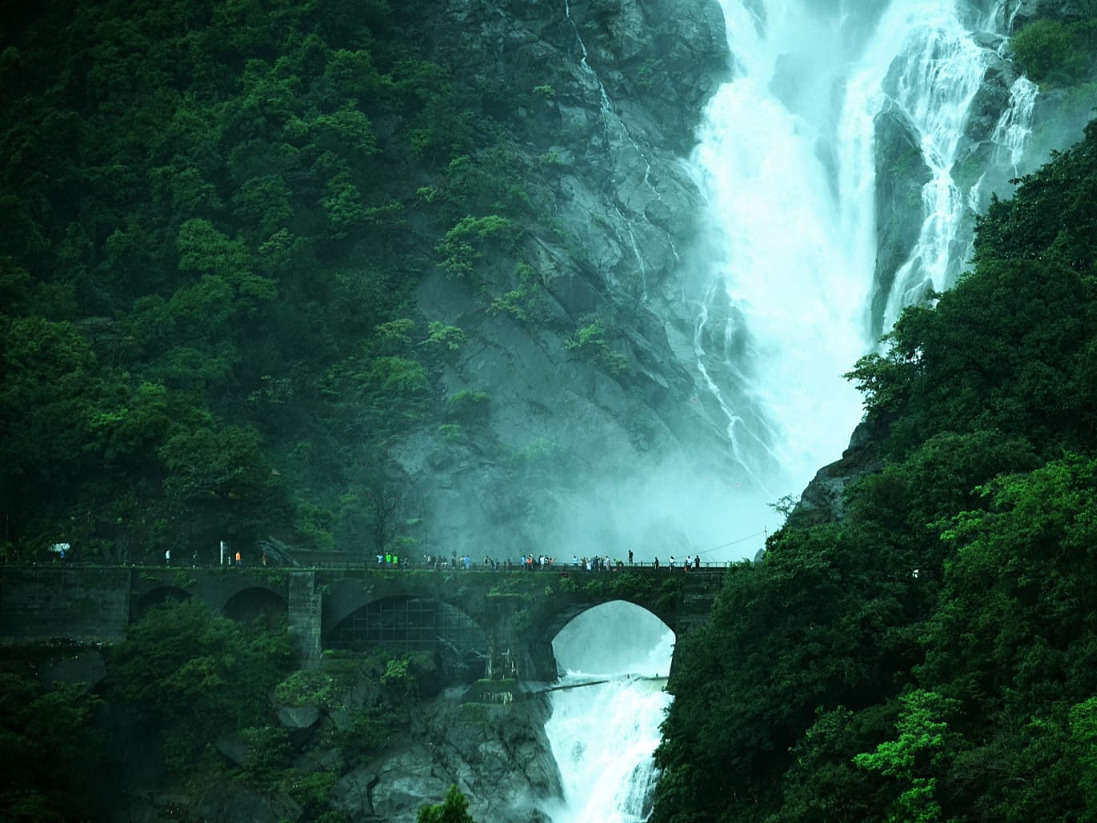Chasing Waterfalls: The Ultimate Dudhsagar Trekking Experience


Deep within the rugged folds of the Western Ghats, where nature's raw elegance meets cascading power, lies one of India’s most breathtaking natural marvels—Dudhsagar Falls. Translated as the "Sea of Milk," this towering four-tiered waterfall is not just a visual treat, but a soul-stirring experience for trekkers and adventure seekers alike. Spilling down from a height of over 310 meters, Dudhsagar is one of the tallest waterfalls in India, and trekking to its base is nothing short of a journey into the wild heart of Goa.
A Hidden Gem Beyond Goa's Beaches
While Goa is often synonymous with golden beaches and vibrant nightlife, the Dudhsagar trek offers a completely different dimension to the region’s diverse appeal. Located on the Goa-Karnataka border inside the Bhagwan Mahaveer Sanctuary and Mollem National Park, Dudhsagar is surrounded by dense tropical forests teeming with biodiversity. This makes the trek as much about the journey through pristine wilderness as it is about reaching the iconic waterfall.
Trekking Routes to Dudhsagar: Choose Your Path
There are primarily two popular trekking routes to reach Dudhsagar Falls:
1. Kulem to Dudhsagar (11 km one-way)
The more scenic and popular route starts from Kulem railway station. This trail winds through dense forest, over small streams, and alongside the railway track. Trekkers are treated to an immersive jungle experience, especially during or post-monsoon when the flora is lush and the terrain comes alive with sounds of birds, insects, and rustling leaves.
2. Castle Rock to Dudhsagar (14 km one-way)
For those who want a longer and slightly more challenging trek, the trail from Castle Rock in Karnataka is a fantastic option. Following the railway track, this path takes trekkers through tunnels, iron bridges, and stunning views of the surrounding mountains before culminating at the falls.
Note: Post-2017, due to safety regulations, trekking along the railway tracks has become restricted. However, eco-tourism organizations and licensed guides now provide safer, legal alternatives through the forest trails with permissions from the Forest Department.
When to Trek: Timing is Everything
The ideal time to trek to Dudhsagar Trek is between October and February, when the monsoon rains have filled the falls but the trails remain accessible. Trekking during the monsoon (June–September) can be dangerous due to slippery paths and waterlogged routes, although the waterfall is at its most powerful during this time. Always check local weather updates and forest department advisories before planning your trek.
What to Expect on the Trail
A Dudhsagar trek is more than a physical challenge—it’s an emotional and sensory experience. As you make your way through the emerald canopy, you might encounter troops of monkeys, colorful butterflies, and even signs of elusive big cats like leopards. The air is rich with the scent of wet earth, and the only sounds you hear are the crunch of gravel under your boots and the distant roar of cascading water growing louder with each step.
After hours of trekking, the first glimpse of Dudhsagar—its white curtain gushing down basalt cliffs—takes your breath away. The grandeur of the falls, framed by dense jungle and often shrouded in mist, makes every drop of sweat worthwhile.
Tips for a Safe and Rewarding Trek
Permissions & Guides: Since the trek passes through protected forest zones, prior permission from the Forest Department is mandatory. It is advisable to hire a certified local guide.
Fitness Level: The trail is moderately challenging and involves long walking hours. Basic physical fitness is necessary.
What to Carry:
Sturdy trekking shoes with good grip
Reusable water bottles (avoid single-use plastic)
Snacks and pa acked lunch
Rain gear (especially from June to October)
First aid kit and insect repellent
Stay Options: Nearby villages like Kulem have homestays and forest lodges. Booking in advance during peak season is recommended.
A Responsible Trek: Leave No Trace
With increasing footfall, preserving the ecological balance of the Dudhsagar region is crucial. Trekkers are urged to follow Leave No Trace principles, such as carrying back all waste, staying on designated trails, and avoiding loud music or disruptive behavior. Respect the sanctity of the place—not just for nature, but for future travelers.
Not Just a Trek, But a Transformation
The Dudhsagar trekking experience is more than reaching a destination; it’s about reconnecting with nature, stepping away from screens and schedules, and rediscovering the simple joys of walking under ancient trees and watching a waterfall that has thundered down for centuries. Whether you're a first-time hiker or a seasoned trekker, Dudhsagar has something profound to offer—a moment of awe, a burst of adrenaline, and memories that linger long after the hike ends.
In a time when digital escapes are easy but rarely fulfilling, chasing waterfalls like Dudhsagar offers something real. Raw. Unfiltered.
Closing Thought
If you’re yearning for a trek that combines tropical adventure, natural grandeur, and cultural richness, then the Dudhsagar trek might just be the pilgrimage you need. Prepare well, respect the environment, and let the thunder of the falls guide your path.
Leave a comment